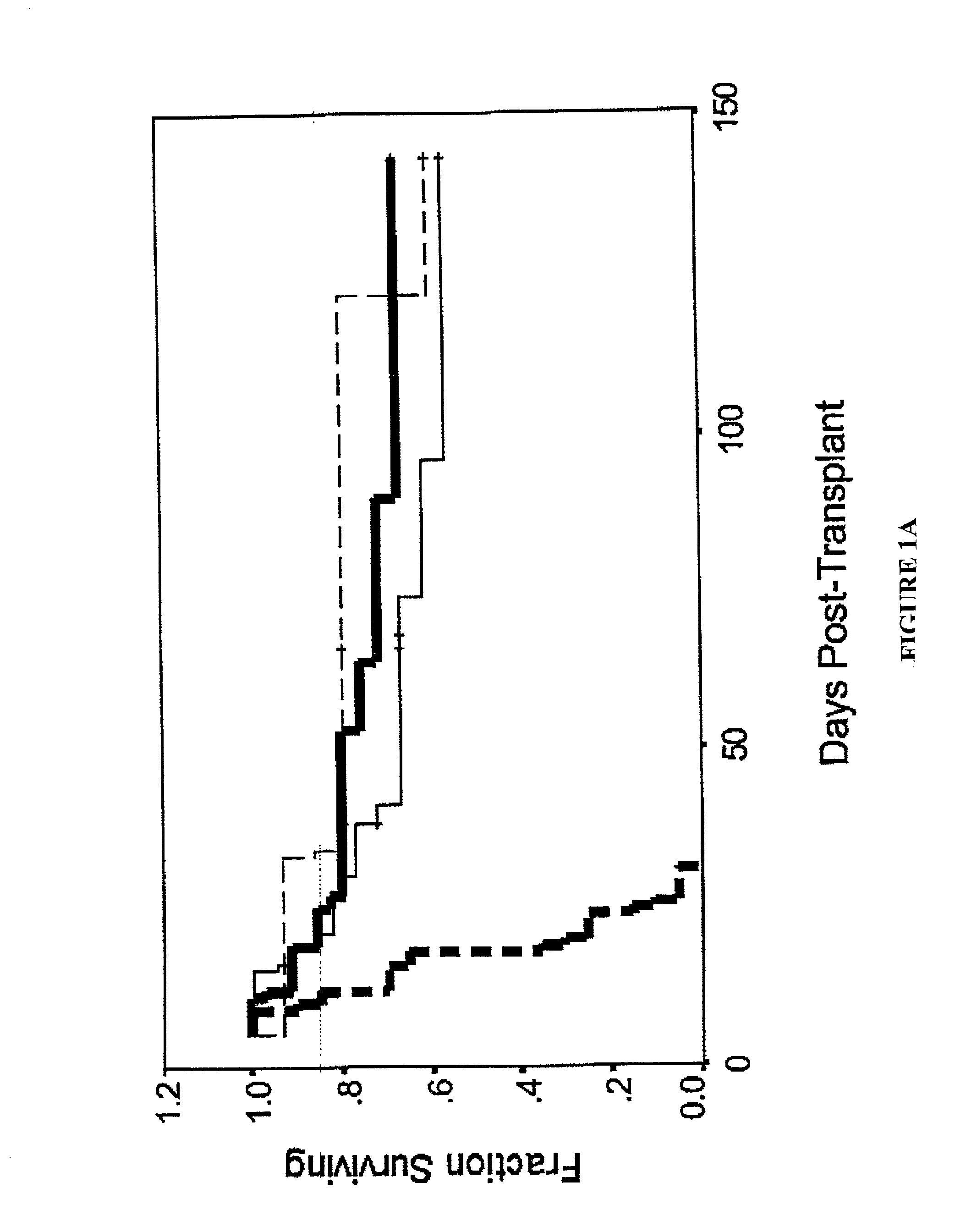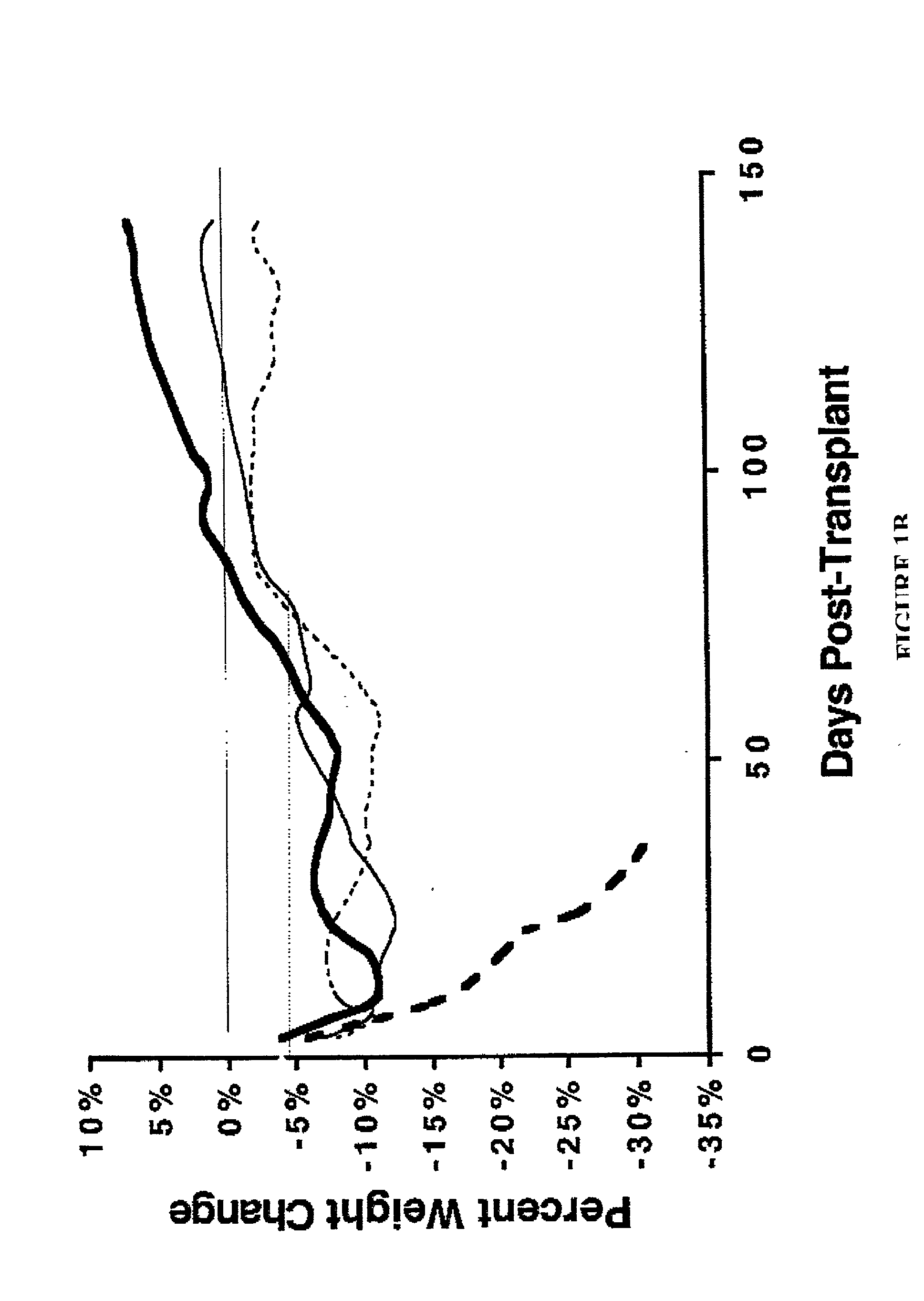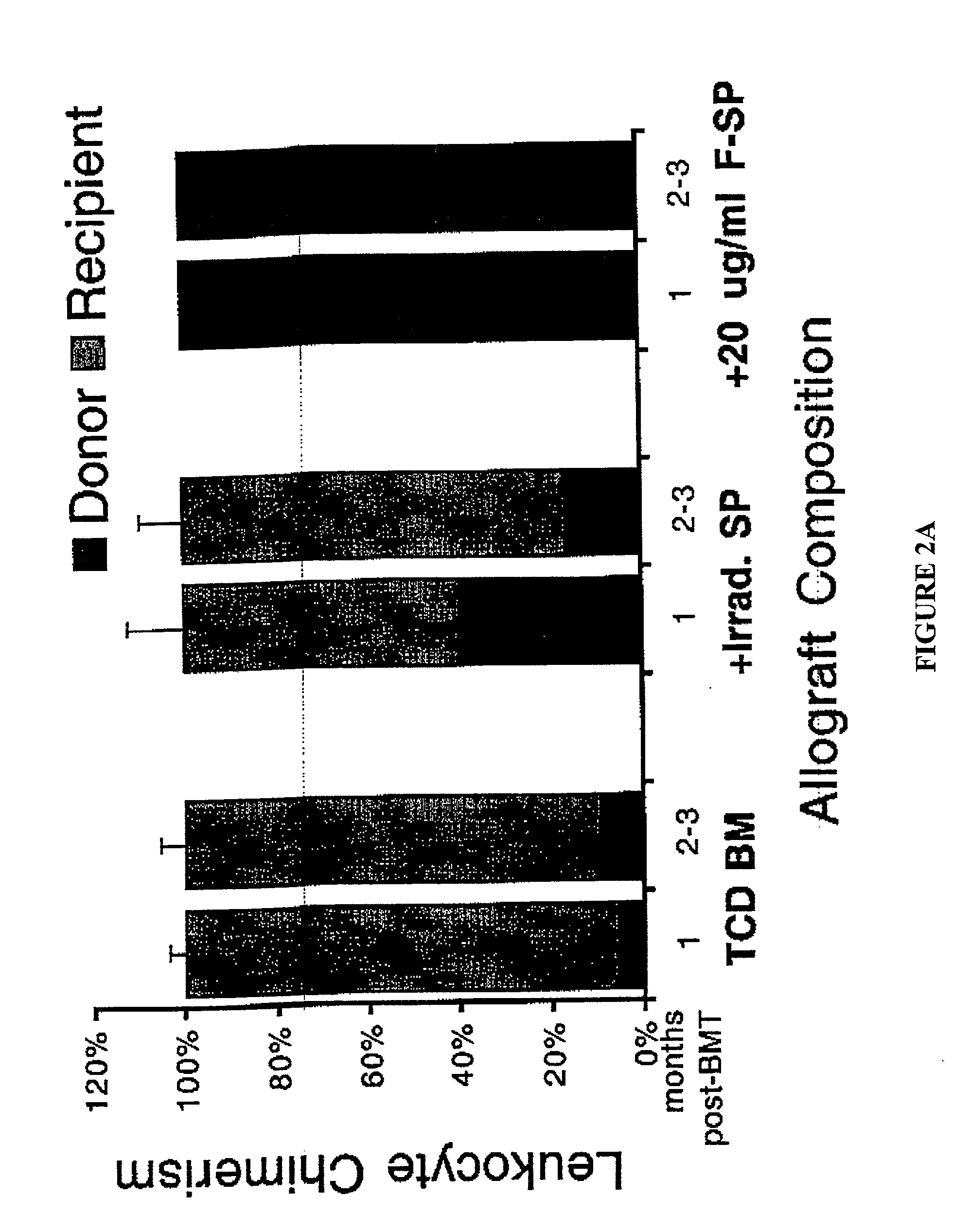Method of transplantation using chemotherapy-treated allogeneic cells that enhance immune responses without graft versus host disease
a technology of allogeneic cells and chemotherapy, applied in the direction of antibody medical ingredients, drug compositions, immuno-suppressed chronic gvhd, etc., can solve the problems of reducing the ability of gvhd to cause graft, increasing the risk of life-threatening opportunistic infections, and increasing the likelihood of graft rejection and/or gvhd death and/or graft rejection. , to achieve the effect of enhancing immune recon
- Summary
- Abstract
- Description
- Claims
- Application Information
AI Technical Summary
Benefits of technology
Problems solved by technology
Method used
Image
Examples
example 1
[0073] Animals:
[0074] B10.BR (H2.sup.k), DBA / 2 (H2.sup.d), Balb / C (H2.sup.d), CD45.1 / CD45.2 congenic strains of C57.BL6 (H2.sup.b) mice, and a C57.BL6 mutant strain having defective NK cells (beige), aged 8 to 10 weeks, were purchased from Jackson Laboratories (Bar Harbor, Me.). A congenic strain of C57.BL6 (H2b) expressing Thy 1.1 was obtained from Miriam Lieberman (Stanford University, CA) and bred at Emory. Mice were maintained in micro-isolator cages in the Emory University Animal Care Facility, with acidified water and standard chow available at all times. Animal handling and experimental procedures were in concordance with the Guide for the Care and Use of Laboratory Animals published by the National Academy Press, Washington, D.C., 1996, and approved by the Emory University Institutional Animal Care and Use Committee (IACUC).
[0075] T-Cell Depleted Bone Marrow (TCD-BM):
[0076] Femora and tibiae were removed and BM cells expelled by flushing sterile Hank's balanced salt solution...
example 2
[0106] Animals:
[0107] C57BL / 6 (H2.sup.b)(CD45.2 / Thy1.2), BALB / cJ (H2.sup.d)(CD45.2 / Thy1.2- ), (C57BL / 6.times.BALB / cByJ)F1(H2.sup.b / d), and PepBoy (C57BL / 6 (H2.sup.b) CD45.1 / Thy1.2) strains of mice aged 8-10 weeks were purchased from Jackson Laboratories (Bar Harbor, Me.). Bone marrow donor mice (BA-PepBoy: C57BL / 6 (H2.sup.b) CD45.1 / Thy1.1) were bred by staff at the Emory University Animal Care Facility. Mice were given acidified sterile water and maintained in Micro Isolator cages (Lab Products Inc., Maywood, N.J.) at the Emory University Animal Care Facility. All experiments were performed in conformance with the Guide for the Care and Use of Laboratory Animals published by the National Academy Press, Washington, D.C. (1996), and approved by the Emory University Institutional Animal Care and Use Committee (IACUC).
[0108] Virus:
[0109] MCMV (Smith strain) was obtained from the American Type Culture Collection (Manassas, Va.; ATCC# VR-1399), and was subjected to three rounds of plaque-...
PUM
| Property | Measurement | Unit |
|---|---|---|
| time | aaaaa | aaaaa |
| concentration | aaaaa | aaaaa |
| total volume | aaaaa | aaaaa |
Abstract
Description
Claims
Application Information
 Login to View More
Login to View More - R&D
- Intellectual Property
- Life Sciences
- Materials
- Tech Scout
- Unparalleled Data Quality
- Higher Quality Content
- 60% Fewer Hallucinations
Browse by: Latest US Patents, China's latest patents, Technical Efficacy Thesaurus, Application Domain, Technology Topic, Popular Technical Reports.
© 2025 PatSnap. All rights reserved.Legal|Privacy policy|Modern Slavery Act Transparency Statement|Sitemap|About US| Contact US: help@patsnap.com



